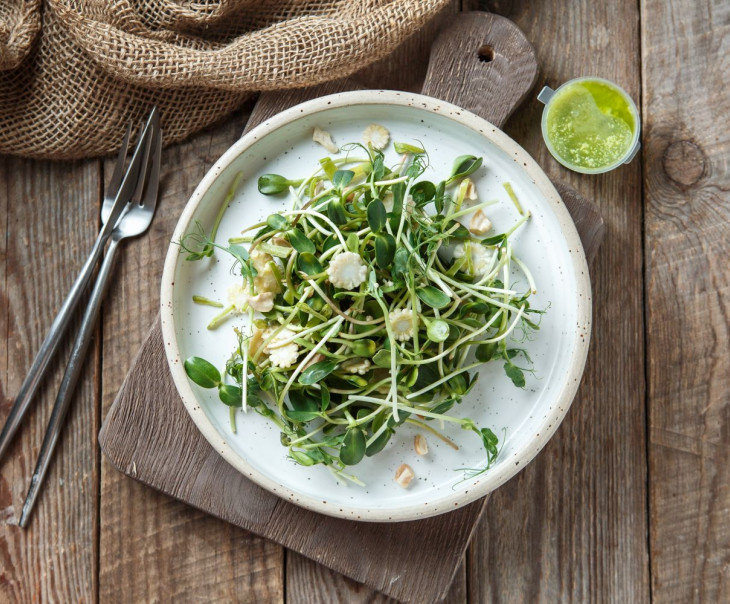One of the most important steps on the way to beauty and well—being is a healthy intestine. What is a microbiome?
What is the microbiome and what is its strength? What is a microbiome?
Bacteria maintain an internal balance — some control the number of others and prevent various diseases from developing. Others unite and fight together against possible pathogenic bacteria, while others produce substances and vitamins necessary for the maintenance of the body.
(1) – “The microbiome consists of microbes that are both helpful and potentially harmful. Most are symbiotic (where both the human body and microbiota benefit) and some, in smaller numbers, are pathogenic (promoting disease). In a healthy body, pathogenic and symbiotic microbiota coexist without problems. But if there is a disturbance in that balance—brought on by infectious illnesses, certain diets, or the prolonged use of antibiotics or other bacteria-destroying medications—dysbiosis occurs, stopping these normal interactions. As a result, the body may become more susceptible to disease.”
Microbes in the gut produce more than 80% of neurotransmitters, such as serotonin and dopamine. They, in turn, regulate our mood and sense of satisfaction with life.
A good microflora is the basis of immunity: 80% of the cells responsible for the immune system are located in the intestine.
The microbiome is responsible for the digestion of food and the assimilation of nutrients obtained from the outside.
At the same time, bacteria normally synthesize different vitamins themselves, for example, B vitamins and vitamin K.
The microbiome plays an important barrier role, protecting us from toxins and the spread of pathogens.

And gut bacteria synthesize short-chain fatty acids and help synthesize glucose naturally, providing us with at least 10% energy.
A healthy gut means a strong immune system, a good mood, a supply of energy, strength and vitamins, and, of course, a beautiful body and skin. And when the balance of microorganisms in the intestine is disrupted for one reason or another, this affects our health, well-being and appearance.
(2) – “The normal gut microbiota imparts specific function in host nutrient metabolism, xenobiotic and drug metabolism, maintenance of structural integrity of the gut mucosal barrier, immunomodulation, and protection against pathogens.”
The influence of the microbiome on the formation of immunity. What is a microbiome?
The effect of a normal human microbiota on the immune system consists of several points.
#1. Firstly, it is the intestinal mucosa, especially the colon. Due to the massive population of bacteria, it is abundantly infiltrated by macrophages, lymphocytes, and plasma cells. The “white blood cells” that are present on the mucous membranes support a permanently ongoing or chronic inflammatory process there. They are always in a state of activity, “war”, and this is what the microbiota forces them to do.
Why is this important? If a pathogenic agent has entered the human body, and lymphocytes and macrophages are already present there, they will neutralize the “enemy”.
#2. Secondly, under the influence of a normal microbiota, natural or normal antibodies are synthesized that will react to all kinds of antigens, pathogens. If the human immune system is functioning normally, it is ready to deal with the “enemy”. It is the microbiota that will stimulate and train our immune cells.
#3. Thirdly, up to seventy percent of all lymphocytes are constantly located in the intestine, which then circulate in the body. They come into contact with agents of both normal and conditionally pathogenic flora, and pathogenic bacteria. Then the lymphocytes, circulating in the body, spread and the so-called “memory cells” will form a distant immune defense.
#4. Fourth, the microbiota stimulates and induces the synthesis of interferons, stimulates the lymphoid apparatus of the intestine.

How are the intestines and skin connected. What is a microbiome?
Often, in order to solve the problem of skin rashes or improve the complexion, we resort to the help of cosmetics and procedures. Meanwhile, our diet directly affects our appearance. For example, with dysbiosis (when the very balance of microflora is disturbed), the absorption of useful elements and vitamins obtained with food is disrupted. They do not reach the skin, which affects its condition, color and susceptibility to infections.
A lack of iron makes the skin pale, a deficiency of B vitamins can be determined by the creases in the corners of the lips, and a lack of sulfur or zinc can lead to dermatitis or excessive dryness of the skin.
Insufficient amount of water in the diet will also affect the appearance: the skin will become dry and lifeless. This also leads to unpleasant consequences for the intestines — constipation and accumulation of toxins.
Therefore, if you feel constant pain, bloating, heaviness or other unpleasant symptoms, this will affect the condition of your skin, hair and nails. And vice versa: an unhealthy complexion, peeling and rashes signal that it is worth taking a closer look at your diet and lifestyle.
Of course, it is important not only what we eat, but also other factors: sleep patterns, how much we move, the ecology of the city. The good news is that the effects of an unhealthy diet and lifestyle can be quickly corrected. To bring the microbiome to balance, adjust the diet and come to a healthy state of health.

How to eat right: the first steps. What is a microbiome?
So, the quality of nutrition directly affects the composition and diversity of the intestinal microbiome.
Set aside time for a full breakfast or dinner so that it doesn’t take place on the run or in anxious work thoughts.
Monotonous and refined foods (for example, fast food and a large number of products made from white flour and sugar) lead to a depletion of the microbiome. Try to make sure that as many natural products of different colors as possible are on your plate: fruits, vegetables, nuts, cereals, and so on. This way your daily menu will become more diverse and richer in useful elements and vitamins.
As we said before, a healthy diet leads to an increase in the number of “good” bacteria and a decrease in the number of “bad” ones. Try to keep not only simple carbohydrates (potatoes, pasta, white rice) and meat on the plate. The ideal plate is half filled with vegetables and herbs, a quarter with proteins (meat, legumes, dairy products) and a quarter with slow carbohydrates (whole grains). Full-fledged fats are also important (raw oils, olives, fish).
Support the microflora with probiotics and prebiotics. Probiotics are microflora—friendly bacteria, they increase the number of “good” bacteria and reduce the number of “bad” ones. They can be found in fermented foods: yogurt, sauerkraut, kombucha-based drinks. Prebiotics are fiber, they serve as a source of nutrition for probiotics. We remind you which foods contain fiber: vegetables, fruits, nuts, legumes and whole grains.
Keep an eye on the water regime. Both the intestines and the skin will thank you for this. You need to drink 7-8 glasses of water a day, depending on your weight.
(1) – Harvard Chan School of Public Health and Harvard Medical School; The Microbiome
https://www.hsph.harvard.edu/nutritionsource/microbiome/
(2) – National Library of Medicine (US), Role of the normal gut microbiota; Sai Manasa Jandhyala, Rupjyoti Talukdar, Chivkula Subramanyam, Harish Vuyyuru, Mitnala Sasikala, and D Nageshwar Reddy; Published online 2015 Aug 7.
https://www.ncbi.nlm.nih.gov/pmc/articles/PMC4528021/



